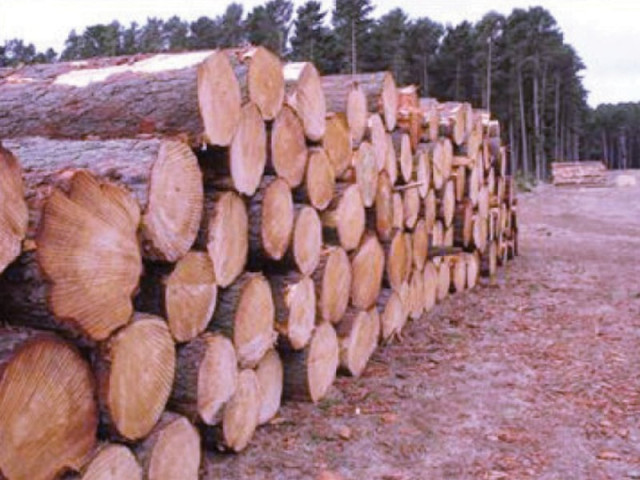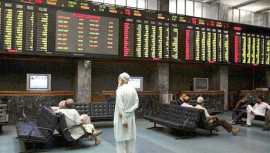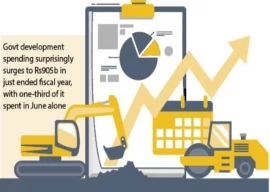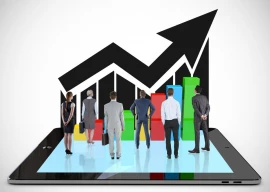
Anecdotal evidence suggests that we, as a nation, don’t feel obliged towards our environment which comes secondary to a lot of things. That Pakistanis in general are not too concerned about what they throw out of the car window shows a lack of respect for their environment and surroundings.
Our politicians have little interest in bettering the environment, given the intangible and rather long-term benefits that come from having greener, healthier surroundings. They would rather cut 10,000 trees and build monuments than focus their attention on something as long-term and ‘abstract’ as the environment.
Canal Road, Main Boulevard and parks in Model Town in Lahore are just some of the public spaces sacrificed at the altar of development.
And then there was the ignoble attempt by a housing society to convert a part of its parks, some of the best in Lahore, to commercial areas, a move that was thankfully blunted by heroic efforts on the part of the ‘Park Bachao Tehreek’ and the Lahore High Court.
Anecdotal evidence though is never enough to make a case. What about the facts and statistics then, decidedly more stubborn and telling than mere anecdotes? As of 2011, Pakistan was emitting 162.4 million tons of carbon dioxide, up from 18.9 million tons in 1972 - quite a jump. In per capita terms, that comes to slightly less than one ton per person, compared to India’s average of around two tons per person and Bangladesh with around 0.5 tons per person.
The rise in carbon dioxide emissions, though harmful, is understandable given economic growth. What is alarming though is the increasing rate of deforestation that Pakistan is facing. For the period from 1990 to 2000, Pakistan was losing its forested areas at the rate of 1.76% per year, which went up to 2.11% for the period from 2000 to 2005 and presently stands at 2.76% per year. To put that into comparison, the average deforestation rates for South and South East Asia for the three periods were 0.77%, 0.12% and 0.33% per year, respectively, with some countries showing growth in forested areas.
At the rate we are going, Pakistan will have lost nearly half of its forests in the next 25 years. As it is, forested areas account for barely 2% of Pakistan’s land mass, which could potentially fall to 1%. This unregulated pursuit of commercial interests at the expense of the environment costs this country much more than any monetary benefit that might accrue from it.
Does this then boil down to one of the core debates of our times: economic growth versus the environment? Most economists argue that one must be compromised so the other may flourish. Usually it is the environment that must yield in the path of economic growth.
The premise is quite simple and intuitive. Economic growth is essentially an increase in levels of production. If you’re a developing country, chances are you’ll be shifting to services and manufacturing, the latter of which requires vast amounts of cheap energy and produces great amounts of pollutants. This production of energy will be powered mostly by cheap, pollution-emitting sources like coal and oil, as is the case with China.
The poster city for such a tradeoff would be Beijing, prosperous and polluted enough to kill. On January 13, according to an article in the Economist, Beijing’s Air Quality Index (AQI) reached 755. Hard to compare when the highest level of pollution possible according to the index is 500. Quite literally off the charts.
For a developing country like Pakistan, the pursuit of economic growth has to be supreme, there is no other way to it. That economic growth has the ability to pull millions out of poverty, gives it it’s all encompassing, supreme importance and nobody should have to languish in poverty for a day more than is absolutely necessary. However, what can be done is to change the dynamic between economic growth and pollution.
The link between increasing levels of pollution and economic growth, if not severed, must be weakened with a softer, more sustainable approach to development and economic growth. Public transport and not more cars and roads, for example, should be seen as the solution to traffic congestion.
After all, none of us would want our children to live in a stark, denuded Pakistan bereft of its natural beauty and as a result, its natural resources.
The writer is an undergrad from Ohio State University and is currently a Teaching Fellow at the Institute for Career And Personal Development
Published in The Express Tribune, September 23rd, 2013.
Like Business on Facebook, follow @TribuneBiz on Twitter to stay informed and join in the conversation.

















COMMENTS
Comments are moderated and generally will be posted if they are on-topic and not abusive.
For more information, please see our Comments FAQ